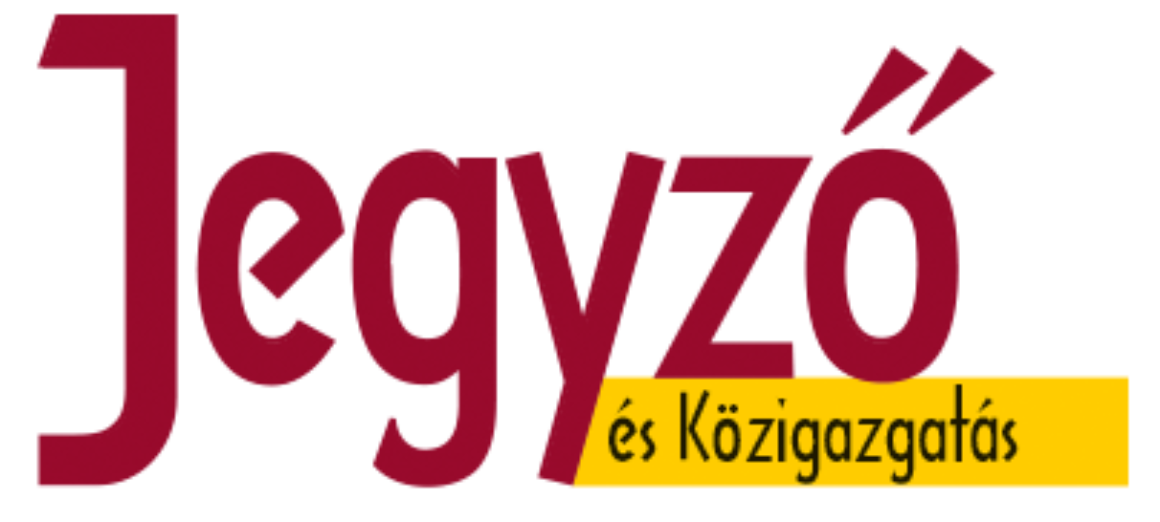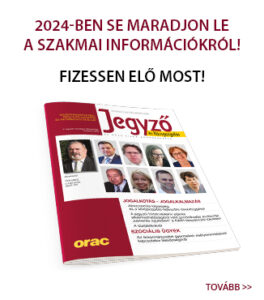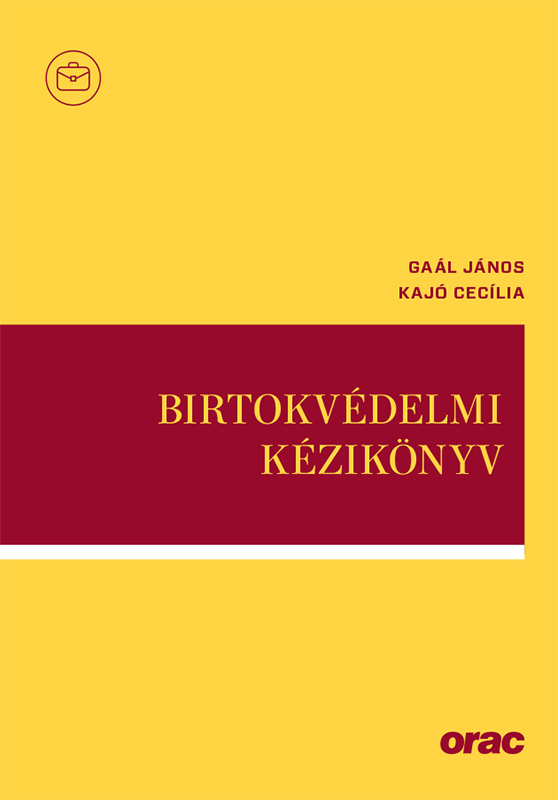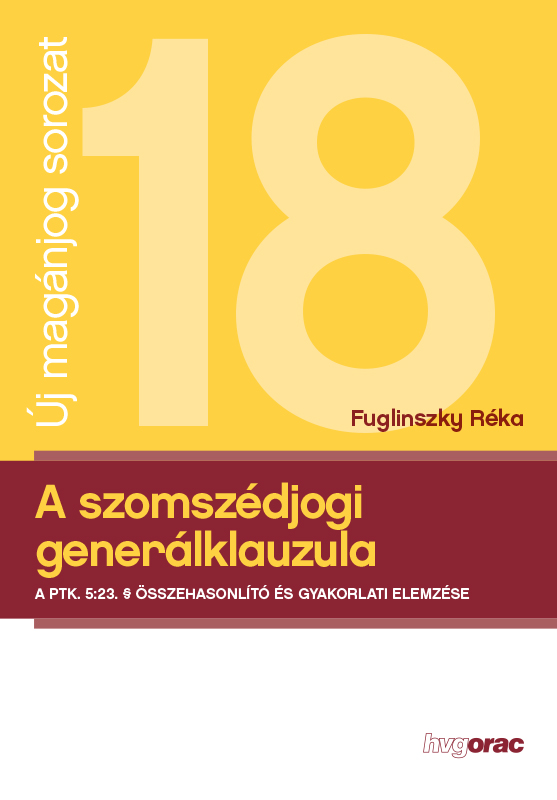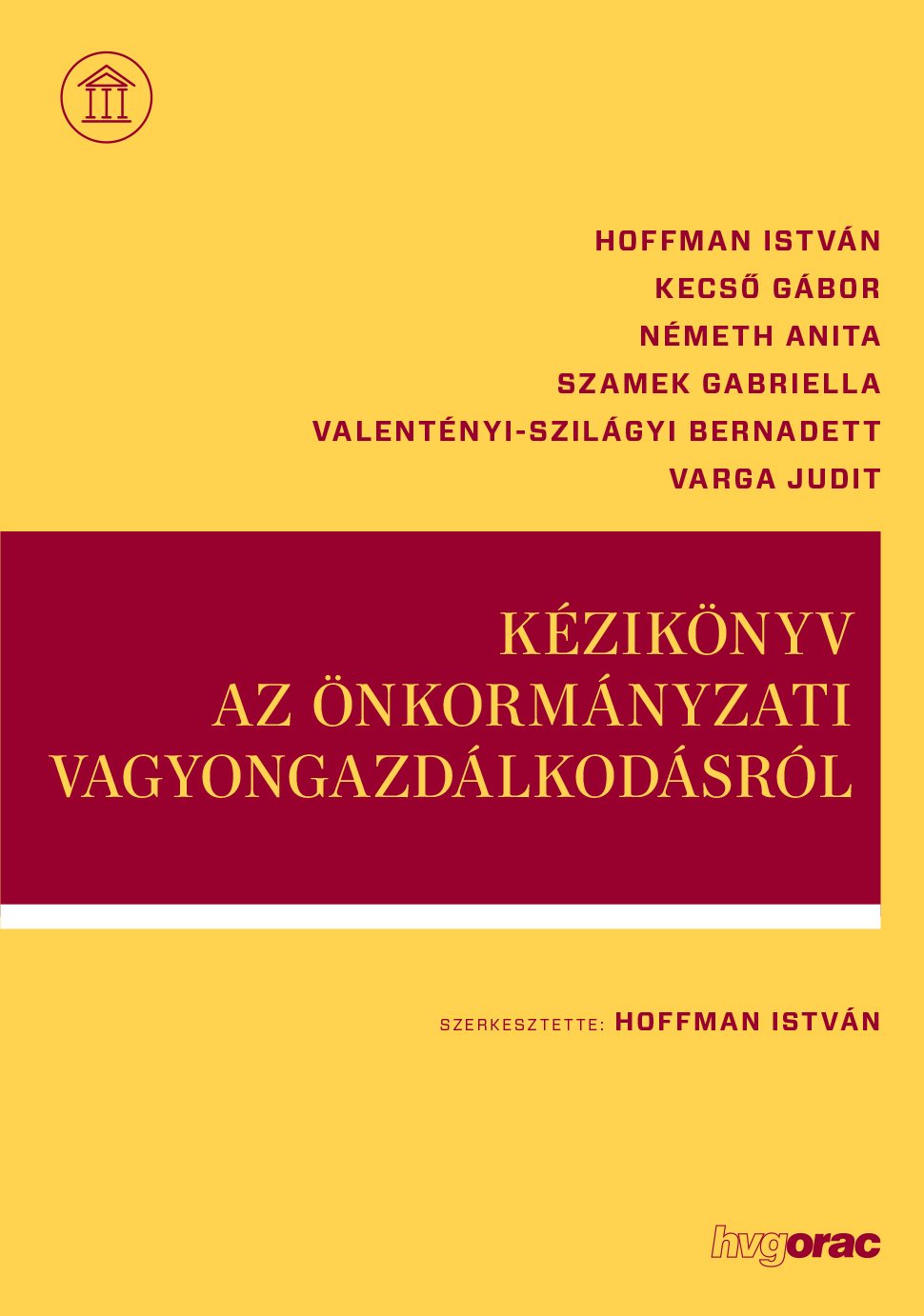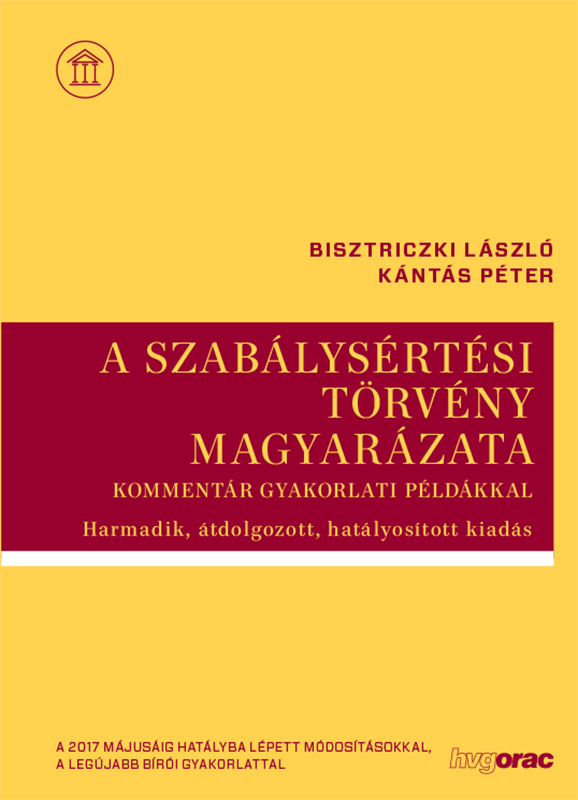
Comparative law II. Legal regulation of the condominium management and the economy – the Hungarian and Swedish legal practice
Jenny Paulsson PhD, Tünde Mitták PhD
I. Short summary of the fundamental rules in Hungary and in Sweden
In Hungary, the fundamental rules concerning the condominium can be found in the Hungarian Civil Code (hereinafter: Civil Code) created in 2013, in the Act CXXXIII of 2003 on Condominiums (hereinafter: Act of Condominiums) and in the 155/2015 (VI. 25.) Government Decree (effective as of 1 July 2015) on the procedure for judicial oversight of the condominium by the notary.
In the Hungarian regulation the condominium property represents a specific property in our law and order – a transition is constituted between business associations with legal personality and unincorporated business associations. The condominium property became institutionalized as a special form of the collective ownership, the condominium is quasi „incomplete legal entity”.
While according to Section 4/A of Act of Condominiums in connection with condominium property, the provisions of the Civil Code shall apply in respect of questions which are not regulated in this Act, till then the detailed procedures for judicial oversight of the condominium by the notary was created in separate Government Decree.
In accordance with Section 5 paragraph 2 of the Act of Condominiums a condominium may be established by the owners of individual units or the owner of the building as a sole founder laying down his decision to establish a condominium in the bylaws. However a condominium shall be deemed established when registered in the real estate register. The bodies of the association, their competencies and rights and obligations, and the rules for the assessment of maintenance fees shall be laid down in the organizational-operational regulations.
In Sweden, the apartment ownership is considered as a form of 3D property ownership (3D-fastigheter) which in its entirety is delimited both horizontally and vertically (Swedish Land Code, Chap. 3, s. 1a). The condominium is an ownership right to a part of a building, usually with a share in the common property surrounding these individual parts and membership in an owners’ association.
There are also indirect forms of 3D property rights, including the tenant-ownership type, where a tenant-owner association owns the apartment building and the land on which it stands and the members will provide capital for the right to use the apartment. Sweden has since the 1930’s also an indirect form of apartment ownership, the tenant-ownership (bostadsrätt) and also at present this is the more common way in Sweden to obtain individual rights to a specific apartment.
Legislation regulating condominiums (ägarlägenheter) was introduced in 2009 in Sweden. It was not enacted as a separate law, but relevant sections were added to the Land Code and the Real Property Formation Act in this way it is thus a rather new phenomenon in Sweden. The Swedish condominium belongs to the dualistic condominium ownership type, which means that each resident owns the physical part of the building where his/her apartment is located and in addition has a share in the common property of the building and land. It will be recorded in the real property register and boundaries, rights and obligations are determined in the property formation.
There are many similarities between tenant-ownership and condominium ownership, but an important difference is that instead of owning a physical part of the building the ownership is represented by a share in the capital of the economic association that owns the property. The purpose of the association is to convey tenant-ownership rights to apartments in the building that is owned by the association. To the ownership of that share is connected the right to use a specified apartment in the property owned by the association, a right which is not limited in time. The management of the tenant-ownership building is handled in a co-operative manner, where the association manages the building whereas the tenant-owner has the responsibility of maintaining the interior of the apartment.
While the condominium apartment forms a separate 3D property unit with its own cadastral number in the real property register (it is owned directly and will have a registered ownership), till then the tenant-ownership apartment is owned indirectly and is only a form of user right to the apartment.
II. Legal regulation in Hungary
A study published in the previous issue of the „The Notary and Public Administration” was concerned with the condominium management activities such as the condominium and housing cooperatives.[2] According to the study there are some 40 000 condominiums in Hungary which constitutes about 25-30% of national property and there are only 1300 housing cooperatives. The condominium is qualified by the Act C of 2000 on Accounting as an other economic organization. The housing cooperative is a nonprofit organization and its primary tasks are real estate management activities and operation, that is may undertake economic activity beyond the realisation of this only. Due to the nonprofit character the housing cooperatives cannot be fitted among the economic companies but actually it does not belong to the classic cooperatives either.
Both of the condominium management activities‘ fundamental function is to operate the own condominiums or cooperative apartments. While the condominium property is a special form of the collective ownership, quasi „incomplete legal entity”, till then the housing cooperative is one of the other economic organizations established to build and maintain the cooperative apartments and it is a legal entity.
The housing cooperative has known since 1904 in Hungary, so thus it looks back at longer past than the condominium’s, similarly as in Sweden where the tenant-ownership has more ancient origin than the condominium property. The law on housing cooperatives is a separated law such the Act CXV of 2004 on Housing Cooperatives is (hereinafter: Act of Housing Cooperatives).
In comparison with the legal institutions there are many similarities between the Hungarian housing cooperative and the Swedish tenant-ownership but there are also many important differences. In case of the housing cooperative the cooperative apartments are owned by members of the housing cooperative, those owners who are not members of housing cooperative and the housing cooperative. A housing cooperative owns the common elements of the building and the land on which it stands and the apartment is owned or used by the member of the housing cooperative. If the cooperative apartment is owned by the housing cooperative the member has the right of permanent use of the specified apartment who can use the apartment itself, can define the ways of utilization and can transfer the right of use (Section 10–12. of Act of Housing Cooperatives). Opposite this in case of Swedish tenant-ownership a tenant-owner association owns the apartment building and the land on which it stands and the members will provide capital for the right to use the apartment.
It is necessary to record the foundation of the housing cooperative to the court leading the company registry and the housing cooperative shall be deemed established when registered in the real property register. The housing cooperative is namely a firm – not a special form of the collective ownership such as the condominium –, therefore it may be the subject of the registry. The housing cooperative can be as an owner of the common elements of the building, cooperative apartment and the land in the real property register.
There is an additional difference in the register, while in case of the Swedish tenant-ownership apartment is owned indirectly and is only a form of user right to the apartment thus it is not registered in the real property register. In Hungary, it is necessary to record the permanent utility right in the real property register and if more persons have utility right to use a specified apartment, this right needs to record in accordance with their utility right share. [Section 8 of 109/1999. (XII. 29.) Decree of the Minister of Agriculture]
This action give members bigger safety because of registering the utility right in a real property register is an public register and the practice of the right onto having patience opposite third persons. It is very important that the temporary utility right shall not be recorded in the real property register. There are additional difference between the condominium management and the economy that are the following:
The condominium management and the economy
The condominium bodies in Hungary are the following:
- the general meeting is the supreme decision-making body of the association of condominium owners,
- the affairs of the association shall be attended to by the managing agent or the governing body (shall comprise at least one chairperson and two members),
- in a condominium building containing more than twenty-five units an audit committee shall be elected to control the financial affairs of the association. (Section 27–51 of Act of Condominiums)
The economic control assistance (Section 51/A–51/B of Act of Condominiums) was established by Section 18 of Act LXXXIX of 2009.
An assistant for economic control functions shall be employed to support the audit committee, or the body exercising control if
- the financial turnover of a condominium association exceeds twenty million forints in a year, or
- the number of units – which are owned individually according to the bylaws – and non-residential units is more than fifty. [Section 51/A paragraph 1 of Act of Condominiums]
The assistant for economic control functions may be a person authorized to provide accounting services under the Accounting Act or a registered certified auditor.
Organizational structure of the housing cooperative:
- the general meeting is the supreme decision-making body of the association of the housing cooperative’s members (the charter document may set forth the method of holding general meetings in the form of partial meetings),
- the fundamental rule of a housing cooperative including that at least 100 apartments or unit of use may prescribe an envoy assembly’s function,
- at least three-membered directorate is governing the activity of the housing cooperative, and it is elected by the general meeting at most five years,
- at least three-membered supervisory committee is permanent controlling whole of the activity of the the housing cooperative, and it is elected by the general meeting at most five years,
- The housing cooperative’s officers: a directorate’s president and its members, or the manager president, furthermore the supervisory committee’s president and its members, or the person entrusted with the supply of the commission’s tasks, and – if the charter document takes action – the Managing Director. The charter document may systematize additional functions. (Section 15–33 of Act of Housing Cooperatives)
The condominium makes its management based on an annual budget. The managing agent or the governing body shall prepare an annual budget draft according to accounting regulations, which shall contain the following:
a) the estimated revenues and expenses associated with common property, broken down by type;
b) the proposed works relating to operations, maintenance and renovation; and
c) the amount of contribution to common expenses, indicating the names of owners of individual units, broken down according to individually owned units and non-residential areas. (Section 47 of Act of Condominiums)
The annual account presented by the managing agent or the governing body and the underlying accounting records kept according to regulations shall contain:
a) the projected and actual expenses, broken down by type, and the distribution of the maintenance fee in a break-down pursuant to the rules laid down in the organizational-operational regulations, showing separately the operating costs, maintenance and renovation works completed in detail;
b) projected and actual revenues broken down according to sources, including the condominium association’s outstanding – and overdue – receivables and the actions taken for collection;
c) the closing balance of the difference between Paragraphs a)–b), detailed according to the management location of the financial reserves;
d) the inventory of tangible assets owned by the condominium association;
e) the liabilities in the year under review to be borne by the entire association;
f) the amount and terms of payment of contributions to common expenses, indicating the names of the owners of individual units, broken down according to individually owned units and non-residential areas; and
g) the amount of savings stemming from household overhead cuts, broken down by type separately for each condominium owner, and the distribution of the maintenance fee in a break-down pursuant to the rules laid down in the organizational-operational regulations. (Section 48 of Act of Condominiums)
In the event that the annual accounting report is approved, the general meeting shall approve the management activities of the managing agent or the governing body for the year under review. The cheque of the condominium’s economy belongs to the jurisdiction of the audit committee.
Financial resources of the activities of housing cooperative is provided by members with the building, members and non-member owners’ payments related to upkeep (operation, maintenance and renovation) and other revenues of the housing cooperative. The housing cooperative is responsible with own asset for the debts deriving from its activities. If the housing cooperative’s assets is not enough to cover debts, members and non-members owners can be obliged by the general meeting to re-invest. In case of enterprising activities, the members shall provide in the charter document to create and separate a firm basis to cover the obligations deriving from the company’s enterprising activities. In this case, the housing cooperative is responsible for obligation with the company’s assets and the members shall be exempt from responsibility. However, the non-member owner must not be imposed to re-invest because of the debts spring from the enterprising activities of the housing cooperative. (Section 45–46 of Act of Housing Cooperatives)
The supervisory committee may inspect any administrative actions of the function and economy of housing cooperative bodies’, may look into documents of the housing cooperative, assess the recommendations presented to the general meeting about the farming of the housing cooperative which is based on the annual report. Without this valid decision cannot be brought in the object of the annual report.
Summarizing, the managing agent or the governing body elected by owners among them or entrusted economic association with the managing agent has responsibility for the legal economy of the condominium. The audit committee may inspect the administrative actions of the managing agent or the governing body at any time and shall examine the association’s finances on a monthly basis, furthermore assess the recommendations presented to the general meeting, in particular the annual financial statement made on the basis of the accounting records kept according to regulations and the annual account, the next year’s budget, and the invoices presented for sums in excess of the limit set out in the organizational-operational regulations.
The housing cooperative is basically a nonprofit organization which has the responsibility with its asset for its debts deriving from his activity. It constitutes a legal person, with the management activities defined by statutory provision, articles of association and decisions by general/assembly meetings.
Controlling, judicial oversight
Despite these severer rules condominiums were often found in mass near the insolvency caused by the wrong economic activity.
There were more and more complaints and discontent against the managing agent, the number of lodging an appeal with the court to have the resolution annulled or to ask of the minority rights was increased. In this background the Act XI of 2014 was promulgated and established in the Act of Condominiums the new rules, that judicial oversight of the condominium association’s operations, condominium bodies and their operations shall be carried out by the notary. (Section 27/A. of Act of Condominiums)
The notary exercising oversight shall check to determine as to whether:
a) the condominium’s bylaws, organizational-operational regulations, and their amendments are in compliance with the law;
b) the condominium’s operation, general meeting resolution is in compliance with the law, the bylaws and the organizational-operational regulations; and
c) the condominium operates in conformity with general meeting resolutions. (Section 27/A. paragraph 2 of the Act of Condominiums)
If the notary finds that the operation does not comply with the above rules, he shall call upon the condominium to restore the legality of operations. If the condominium fails to restore the legality of operations within sixty days from the time of receipt of the notary’s request, the notary may bring action in court within thirty days following the said deadline for seeking a court order compelling the condominium to restore the legality of operations.
Upon the notary’s action the court may the following:
a) overturn the resolution the general meeting has adopted not in conformity with Paragraph
b) of Subsection (2) and may order – if deemed necessary – that a new resolution be adopted,
b) convene the general meeting in order to restore legality of operation or may order the notary or the audit committee to do so, or
c) impose a fine between one hundred thousand and five million forints upon the managing agent or upon the head or members of the governing body, as corresponding to the severity of the infringement, if legality of the condominium’s operation cannot be restored as under Paragraph a) or b) on account of the managing agent’s or the governing body’s unlawful conduct. (Section 27/A. paragraph 5 of the Act of Condominiums)
155/2015 (VI. 25.) Government Decree on the procedure for judicial oversight of the condominium by the notary is in force as of 1 July 2015 and in accordance with Section 5 the notary’s action may not drive to check of economicalness or expediency viewpoint of the condominium. The notary’s rights is only to check those things that are in the Section 27/A. paragraph 2 of the Act of Condominiums.
Judicial oversight of the housing cooperative shall be carried out by the registry court in accordance with the Act V of 2006 on Public Company Information, Company Registration and Winding-up Proceedings. Any member of the housing cooperative’s and non-member owner further entitled to the permanent (temporary) rights of use may apply to the court for revision of a decision brought by the housing cooperative or its bodies, which are against measures or the housing cooperative’s fundamental rule or any inner regulations. The action must be started against the housing cooperative within sixty days from the time of the communication of the decision. The action has no suspensive effect, but the court may suspend the execution of the decision. It may be obligatory in the charter document that the member concerned with the derogatory decision may report the offence – before a lawsuit launch – to the supervisory committee. (Section 8–9 of Act of Housing Cooperatives)
III. Legal regulation in Sweden
Legislation regulating condominiums (ägarlägenheter) was introduced in 2009 in Sweden, but the country has since the 1930’s also an indirect form of apartment ownership, the tenant-ownership (bostadsrätt), which has similarities with the condominium.
The tenant-ownership association (bostadsrättsförening) managing the tenant-ownership property is a legal person and is regulated by the Tenant-ownership Act and the Act on Economic Associations. The rights are not considered to be rights in real property, but rather intangible property rights. This right constitutes shares in the association connected to a right to use a specific apartment. Thus, the association owns the real property and the member of such an organization has through the membership the right to live in an apartment in the building owned by the association. To become a member, the tenant-owner will pay for a share in the association and apply for membership. Then each month usually the owner has to pay a monthly fee charged by the association.
There is no public register for the tenant-ownership when it comes to ownership. Only the associations have individual registers of their members, although the register of share owners is available to the public.
The owner of the tenant-owned apartment may use the apartment as security for a loan. The association must then be notified if the apartment has been pledged as security. The association must also note in the list of apartments that the apartment is pledged as security.
The members of the tenant-ownership associations are not responsible for its debts, although if the building should be destroyed and not rebuilt, the association will be liquidated and the members share the assets according to their shares.
According to the Tenant-Ownership Act the conveyance of a tenant-ownership apartment can only be made to a member in the association in exchange for payment and for an indefinite term. Only the association can convey the original right to the apartment, and the member can then later sell his or her share and rights. The association has to have at least three members, bylaws, a board of directors and at least one auditor.
The condominium (ägarlägenhet) has similar rules as for other types of real property. Registration of ownership entitles to full disposal of the apartment, including renting it out and making changes to the interior of the apartment. As for other types of property it is possible to mortgage and transfer the condominium apartment. It is also possible to own several condominium apartments. Stamp duty is paid on the purchase of the condominium and for issuing mortgage certificates. The same taxation rules apply as for single-family homes.
For the common areas of a condominium building a joint property unit is formed, in which each condominium apartment owns a share. For the common facilities a joint facility is formed, in which each condominium also owns a share. The joint property and joint facility are jointly managed by the apartment owners through a joint property (owners’) association (samfällighetsförening), in which the owners are members. The owners’ association constitutes a legal person, with the management activities defined by statutory provision, articles of association and decisions by meetings.The association is obliged to comply with special rules concerning funding and other measures for the future maintenance of the common property. The costs for the operation of the common space and facilities are allocated among the owners.
In addition to the laws governing the tenant-ownership and the (condominium) joint property associations, the association also has its own rules and regulations. They are registered at the Swedish Companies Registration Office (Bolagsverket) and each member of the association then receives a copy.
The condominium and tenant-ownership management and the economy
The tenant-ownership bodies in Sweden are the following:
- the general meeting is the supreme decision-making body of the association of owners
- the affairs of the association shall be attended to by the governing body/board
- an auditor shall be elected to control the financial affairs of the association
The general meeting of the association is held once per year and is the association’s highest decision-making authority. All members are invited to the general meeting where they can review the association’s activities. The general meeting establishes such things as the income statement and balance sheet, as well as the board’s freedom from liability. Each member has one vote at the annual meeting. If several members jointly own a tenant-owned apartment, they only have one collective vote. At the meeting, the members also elect the board and auditor(s). If required, the board may arrange an extraordinary meeting of members when an issue requires a quick decision. At such a meeting, a decision can only be made on the issue specified in the notification.
The board of directors is elected at the annual general meeting of the association. When elected, the board holds a statutory or inaugural meeting to decide who will be the chairman, secretary, etc. and the board members will be registered at the Swedish Companies Registration Office. The board is the association’s executive committee and is responsible for administration and management. It deals with membership issues and membership cancellations, e.g. when a tenant-owner forfeits the ownership right. The board is also responsible for the day-to-day management of the association. It is responsible for the association’s economy and finances, including determining the size of the annual fee paid by the members, which is usually done once per year when the annual budget is prepared.
The auditor, or auditors, is also elected at the annual general meeting of the association. The auditor does not have to be a member of the association and must not be a member of the board or have other connections with the management of the association.
The members of the tenant-ownership association participate themselves in the activities of the association and in that way they can have influence on their economic interests. The Tenant-Ownership Act provides that economically unsustainable projects will be avoided and make sure that the members will obtain good insight into the activities of the association. Conveyance of apartments therefore cannot be made until an economic plan has been drafted. The economic plan is prepared by the board of the association and must be submitted to the Swedish Companies Registration Office, who will register it. Two persons must certify that the project is economically sustainable. The economic plan is a technical and economic description of the association’s activities. It shall make it possible to evaluate the activities of the association.
The economic plan should describe the association’s buildings and the expenses the association has for operation and maintenance and for any loans that the association has. The contents of the plan are regulated in the Tenancy-Ownership Ordinance. There are no limitations regarding what the plan may contain, but there has to be information regarding a number of things. It contains a list of the apartments in the building and specifies the deposits (investment portion) for each apartment, i.e. how much each member has to pay for his or her share of the association. The plan also specifies the estimated capital, operating expenses and taxes for the first few years, expenses associated with the association’s loans, etc. It includes e.g. the cost that is paid by the association for the property unit that it owns and that contains the apartments, the cost for required maintenance and reconstruction, cost for other important measures, how these costs should be financed, ongoing costs and income, as well as operating costs paid by the owners and that are not included in the monthly fee. It shall also include an economic prognosis and a sensitivity analysis.
The tenant-owner pays a fee each month to the association which is based on the total annual fee. This annual fee is set by the board of directors. The fee covers each owner’s share of all common costs that the association has for the building, including e.g. interest expenses for loans, amortization payments for loans, operating costs, taxes, insurance, repairs and maintenance.
Financing of the final acquisition cost of the association’s property usually takes place both through loans taken out by the association and through down payments that the tenant-owners make to the co-operative. The annual running costs include e.g. building maintenance, cleaning, garbage collection, snow ploughing, electricity, water consumption, heating, insurance and administrative costs. It is regulated that the association each year must put money into a fund for future maintenance of the property. The sum of all these costs should be covered by the annual fees paid by the tenant-owners. Generally, the apartment area is used for determining how the annual fee should be distributed between the tenant-owners. The annual report presents information about the costs and income of the association, as well as available funds, assets and liabilities. This report is distributed to the members at the annual general meeting.
The common property of the condominium apartments is normally jointly managed by the apartment owners through a joint property association. The owners are all members of the association. The association must comply with special rules concerning funding and the future maintenance of the common property. The costs for the operation of the common spaces and facilities are allocated among the owners. It is sometimes possible to separate some of the running costs so that electricity and water are paid separately on apartment level.
There are many similarities between the tenant-owner association and the joint property association for condominium when it comes to management and economy. The rules for this can be found in the Joint Property Management Act. The general meeting is the association’s governing body, where all members are entitled to attend and decide on the management of the association. Normally annual meetings are held but extraordinary are also possible if a particular need arises. The board is the association’s executive body and is appointed by the general meeting. The board’s tasks are e.g. to ensure that new facilities will be constructed and that existing installations are managed. To finance the construction, maintenance and renewal of the association’s facilities the association can levy charges from the members and take another mortgage. The association may also, and in some cases shall, set aside funds in a reserve, as for the case of safeguarding maintenance and renewal of the joint facility within the condominium property.
Controlling, judicial oversight
In the annual general meeting the issue of the board members’ liability is examined. It is a compulsory item on the agenda by law. The decision is made individually for each member and how they have acted as representatives of the association. The board members themselves will not vote since they are disqualified. If the discharge is granted, the decision means that the association approves the board’s management and refrains from claims against the board.
If the discharge is not granted, someone must take action for something to happen, such as the association or the members file claims in court, seeking to be reimbursed to the association of the economic loss caused to the association by the board’s management. Action for damages must normally be brought before the court within one year after the general meeting. Three years applies if the meeting had not been fully informed of the decision or action that is the basis for the claim.
However, damages to the association by law can only be considered if the board willfully or negligently damages the association in the performance of their duties. It is the association or the individual who carries the burden of proof in the process, and it is generally high demands on the evidence for the board to be deemed liable.
IV. Summary
In Hungary there are some 40 000 condominiums which constitutes about 25-30% of national property and there are only 1300 housing cooperatives. Both of the condominium management activities’ fundamental function is to operate the own condominiums or cooperative apartments. While the condominium property is a special form of the collective ownership, quasi „incomplete legal entity”, till then the housing cooperative is one of the other economic organizations established to build and maintain the cooperative apartments and it is a legal entity.
The condominium bodies in Hungary are the general meeting, the managing agent or the governing body and an audit committee. The economic control assistance was established in 2009. The condominium makes its management based on an annual budget. The managing agent or the governing body shall prepare an annual budget draft according to accounting regulations. In the event that the annual accounting report is approved, the general meeting shall approve the management activities of the managing agent or the governing body for the year under review. The cheque of the condominium’s economy belongs to the jurisdiction of the audit committee. Summarizing, the managing agent or the governing body elected by owners among them or entrusted economic association with the managing agent has responsibility for the legal economy of the condominium. The audit committee may inspect the administrative actions of the managing agent or the governing body at any time and shall examine the association’s finances on a monthly basis, furthermore assess the recommendations presented to the general meeting.
Organizational structure of the housing cooperative: the general meeting (the fundamental rule of a housing cooperative including that at least 100 apartments or unit of use may prescribe an envoy assembly’s function), the directorate, the supervisory committee and the housing cooperative’s officers.
Financial resources of the activities of housing cooperative is provided by members with the building, members and non-member owners’ payments related to upkeep and other revenues of the housing cooperative. The housing cooperative is responsible with own asset for the debts deriving from its activities. The supervisory committee may inspect any administrative actions of the function and economy of housing cooperative bodies’, may look into documents of the housing cooperative, assess the recommendations presented to the general meeting about the management of the housing cooperative which is based on the annual report. The housing cooperative is basically a nonprofit organization which has the responsibility with its asset for its debts deriving from his activity.
In Sweden the tenant-ownership association managing the condominium property is a legal person. The association owns the real property and the member of such an organization has through the membership the right to live in an apartment in the building owned by the association. There is no public register for the tenant-ownership, only the associations have individual registers of their members. However, this register of share owners is available to the public.
The members of the tenant-ownership associations are not responsible for its debts, but the association will be liquidated and the members share the assets according to their shares if the building should be destroyed and not rebuilt. The owners’ association constitutes a legal person, with the management activities defined by statutory provision, articles of association and decisions by meetings. The association is obliged to comply with special rules concerning funding and other measures for the future maintenance of the common property. In addition to the laws governing the associations, the association also has its own rules and regulations. They are registered at the Swedish Companies Registration Office (Bolagsverket)
The tenant-ownership bodies in Sweden are the general meeting, the governing body/board and an auditor. The general meeting of the association is held once per year and is the association’s highest decision-making authority. The board is the association’s executive committee and is responsible for administration and management, further for the association’s economy and finances. The auditor does not have to be a member of the association and must not be a member of the board or have other connections with the management of the association.
The tenant-owner pays a fee each month to the association which is based on the total annual fee. This annual fee is set by the board of directors. The fee covers each owner’s share of all common costs that the association has for the building (including e.g. interest expenses for loans, amortization payments for loans, operating costs, taxes, insurance, repairs and maintenance).
The condominium (ägarlägenhet) has similar rules as for other types of real property. Registration of ownership entitles to full disposal of the apartment, including renting it out and making changes to the interior of the apartment. As for other types of property it is possible to mortgage and transfer the condominium apartment. It is also possible to own several condominium apartments. Stamp duty is paid on the purchase of the condominium and for issuing mortgage certificates.
The common property of the condominium apartments is normally jointly managed by the apartment owners through a joint property association. The owners are all members of the association. The association must comply with special rules concerning funding and the future maintenance of the common property. The costs for the operation of the common spaces and facilities are allocated among the owners.
There are many similarities between the tenant-ownership association and the joint property association for condominium when it comes to management and economy. The general meeting is the association’s governing body, where all members are entitled to attend and decide on the management of the association. Normally annual meetings are held but extraordinary are also possible if a particular need arises. The board is the association’s executive body and is appointed by the general meeting. The board’s tasks are e.g. to ensure that new facilities will be constructed and that existing installations are managed. To finance the construction, maintenance and renewal of the association’s facilities the association can levy charges from the members and take another mortgage. The association may also, and in some cases shall, raise funds.
In the annual general meeting the issue of the board members’ liability is examined. If the discharge is granted, the decision means that the association approves the board’s management and refrains from claims against the board. If the discharge is not granted, someone must take action for something to happen, such as the board or the members file claims in court, seeking to be reimbursed to the association of the economic loss caused to the association by the board’s management. Action for damages must normally be brought before the court within one year after the general meeting. Three years applies if the meeting had not been fully informed of the decision or action that is the basis for the claim.
However, damages to the association by law can only be considered if the board willfully or negligently damages the association in the performance of their duties. It is the association or the individual who carries the burden of proof in the process, and it is generally high demands on the evidence for the board to be deemed liable.
In comparison with the legal institutions there are many similarities between the Hungarian housing cooperative and the Swedish tenant-ownership but there are also many important differences. In case of housing cooperative the cooperative apartments are owned by members of the housing cooperative, those owners who are not members of the housing cooperative and the housing cooperative. A housing cooperative owns the common elements of the building and the land on which it stands and the apartment is owned or used by the member of the housing cooperative. If the cooperative apartment is owned by the housing cooperative the member has the right of permanent use of the specified apartment who can use the apartment itself, can define the ways of utilization and can transfer the right of use. Opposite this in case of Swedish tenant-ownership a tenant-owner association owns the apartment building and the land on which it stands and the members will provide capital for the right to use the apartment.
The housing cooperative shall be deemed established when registered in the real property register which can be as an owner of the common elements of the building, cooperative apartment and the land in the real property register. The Swedish tenant-ownership apartment is owned indirectly and is only a form of user right to the apartment thus it is not registered in the real property register. In Hungary, it is necessary to record the permanent utility right in the real property register and if more persons have utility right to use a specified apartment, this right needs to record in accordance with their utility right share.
There are also many similarities between the Hungarian and the Swedish condominium, especially the condominium bodies, the general meeting, the annual meetings role and the registration of ownership. However there are many important differences too, f. e. judicial oversight. While in Hungary the judicial oversight of the condominium association’s operations, condominium bodies and their operations is carried out by the notary, in Sweden the board or the members file claims in court, seeking to be reimbursed to the association of the economic loss caused to the association by the board’s management.
Damages to the association by law can only be considered if the board/governing body willfully or negligently damages the association in the performance of their duties. It is the association or the individual who carries the burden of proof in the process, and it is generally high demands on the evidence for the board to be deemed liable. In Hungary the managing agent’s responsibility is big but there is an unresolved problem considered if they willfully or negligently cause damage. The procedure for judicial oversight of the condominium by the notary does not give any solution if the managing agent abuses his or her right. The notary has not competence about this and it happens frequently that the owners cannot prove the managing agent’s responsibility.
Jenny Paulsson PhD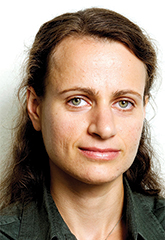
Associate Professor (docent) in Real Estate Planning and Land Law,
KTH – Royal Institute of Technology, Stockholm
Tünde Mitták PhD
Lawyer, student
SFEJ – Intensiv Swedish for Academics, Stockholm
Kategória
Könyvajánló
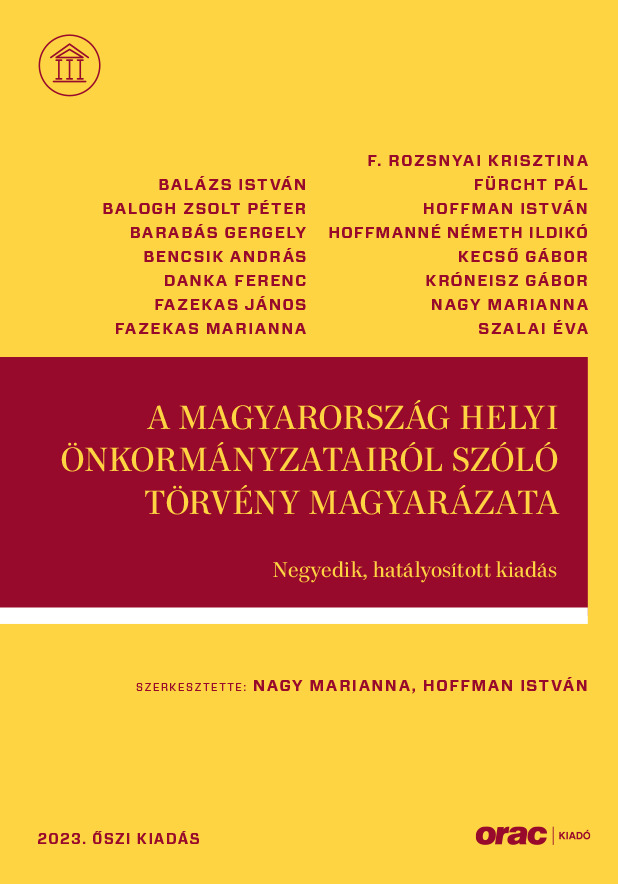
A Magyarország helyi önkormányzatairól szóló törvény magyarázata
Negyedik, hatályosított kiadás
(2023. őszi kiadás)
Ára: 12000 Ft

